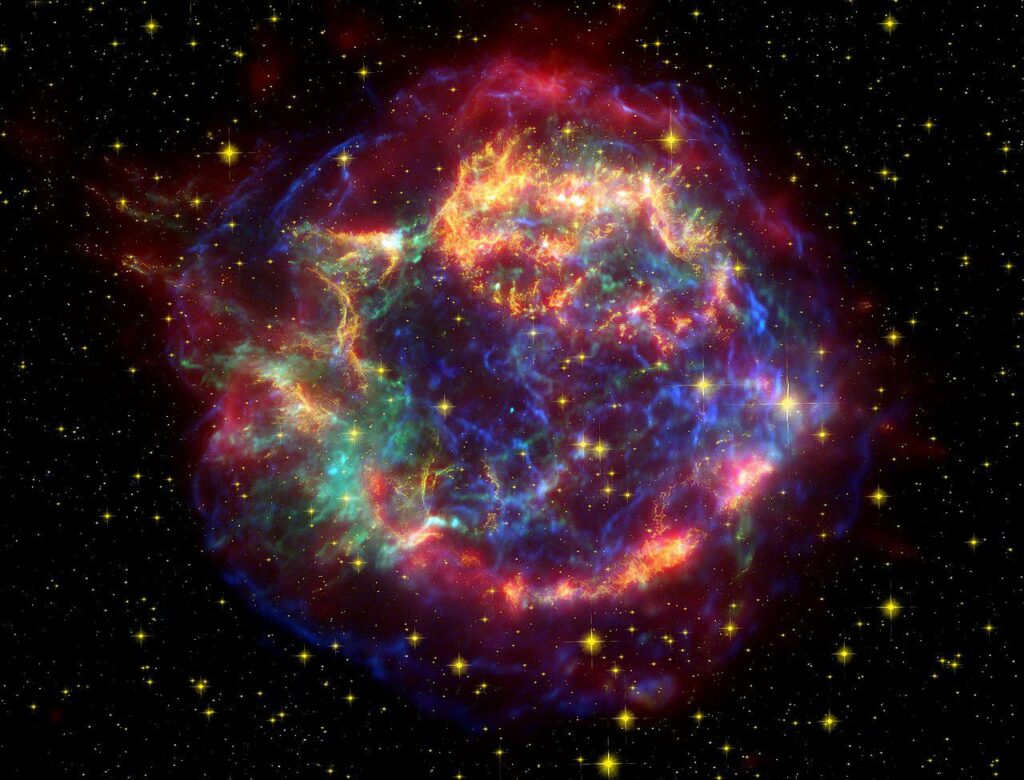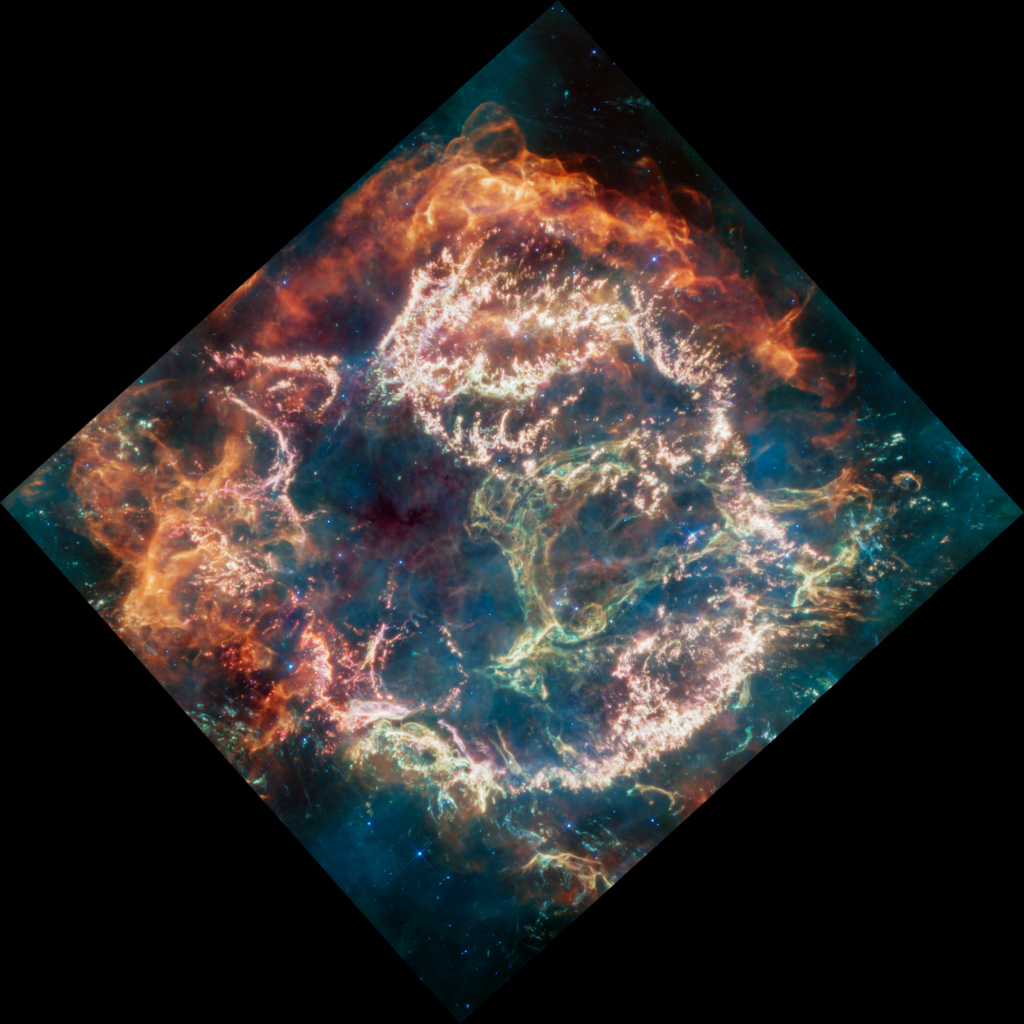NASA has published a spectacular new image taken by the James Webb Space Telescope (JWST). It photographed Cassiopeia A: a nebula formed on the site of a recently exploded star.
Remnant of a dead star
Cassiopeia A has long attracted the attention of astronomers. It is located at a distance of 11 thousand light-years from Earth and represents one of the youngest supernova remnants in the Milky Way. It is believed that the light from its flare should have reached our planet around 340. However, there is no record of this event in the historical chronicles. There is an assumption that shortly before the explosion, the star ejected a large amount of matter. It enveloped it tightly and absorbed the light from the flare.

It was only in 1947 that astronomers discovered a powerful radio source in the constellation Cassiopeia, which was later correlated with a supernova remnant. Subsequently, it was possible to identify it in the optical range. Observations have shown that the nebula formed as a result of the death of the star has a radius of 5 light-years. Its matter is heated to a temperature of about 30 million degrees and expands at a speed of 4-6 thousand km/s.
Cassiopeia A through the eyes of the James Webb Telescope
Due to its proximity to the Earth and its youth, Cassiopeia A is the object of close study by many astronomers and astrophysicists. It has been photographed repeatedly by both ground-based observatories and space telescopes, including Hubble, Chandra and IXPE. Now JWST has also been added to this list. Thanks to its ability to conduct observations in the infrared range, astronomers have obtained an incredibly detailed image showing many previously unknown details of its structure.

The JWST photo shows an expanding bubble, in the outer part of which there are plumes marked with orange and red colors, containing a lot of warm dust. They mark the zones where the collision of the star’s matter ejected during the explosion and the near-stellar gas and dust has occurred.
Inside the nebula, pink threads are visible, covered with knots and clusters of matter that contain many heavy elements, such as oxygen, argon and neon, born in the interior of a dead star. A loop-like structure marked in green is also visible. Its nature is still a mystery to astronomers.
It is worth noting that the colors in the JWST image are artificial and do not correspond to what the human eye could see. Each color corresponds to infrared radiation at a certain wavelength.
According to https://www.nasa.gov
Follow us on Twitter to get the most interesting space news in time
https://twitter.com/ust_magazine

